A holiday in South Tyrol is always a pleasure trip. The good news for all fans of down-to-earth cuisine with its hearty recipes: some things are easy to cook at home. For example these recipes.
Ramsons dumplings ©Getty Images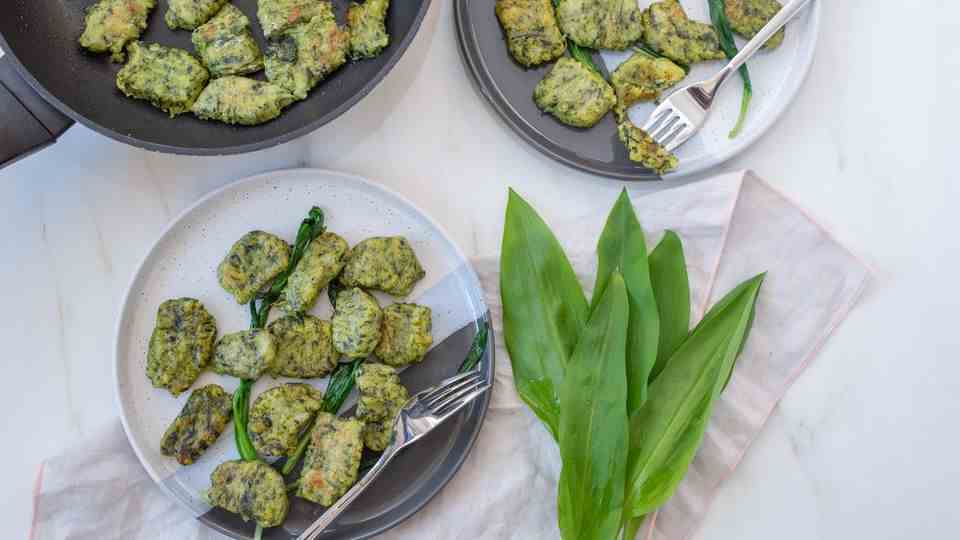
West of Frankfurt, the density of dumplings decreases in Germany. The tasty balls made of flour, milk and bread are likely to be missed, especially by South Tyrol holidaymakers from northern Germany. This simple recipe for wild garlic dumplings goes perfectly with summer dishes with salads. The nice thing about wild garlic: It smells like garlic, but has no odor effects the next day.
Ingredients for 4 persons:
- 150 g sliced white bread
- 0.25 liter l milk
- 200 g wild garlic
- 2 tbsp Parmesan
- a small onion
- 2 eggs
- Salt pepper
preparation
Blanch the wild garlic and chop finely. Soak the sliced white bread in the milk. Mix the chopped wild garlic with salt, pepper, Parmesan cheese, eggs and onion and pour over the sliced bread. Mix everything together well and form the dumplings. Cook the dumplings in boiling salted water for about 10 minutes. That’s it already. Fits perfectly as an accompaniment to the salad.
Schupfnudeln Schupfnudeln are a side dish with almost everything. Here with a hearty pan of cabbage and sausage. ©Getty Images
In the traditional Schupfnudel, two things come together that Germans love: potatoes and noodles. It couldn’t be better, especially since the potato noodles can be combined in so many different ways.
For 4 people you need:
- 400 grams of potatoes
- 2 egg yolks
- 30 grams of butter
- 150 grams of flour
- Salt
preparation
Peel the potatoes, cut them into cubes and boil them in salted water, strain and let them steam out a little. Strain the potatoes, mix with the egg yolk and salt and leave to cool. Now comes the timing part: as soon as the flour has been kneaded into the potato mixture, the noodles have to be formed quickly. It is best to roll a small amount of dough over both palms or a board. Put the Schupfnudeln in boiling salted water. When the noodles come to the surface, remove with a slotted spoon.
South Tyrolean cheese dumplings © Karl Allgaeuer/ / Picture Alliance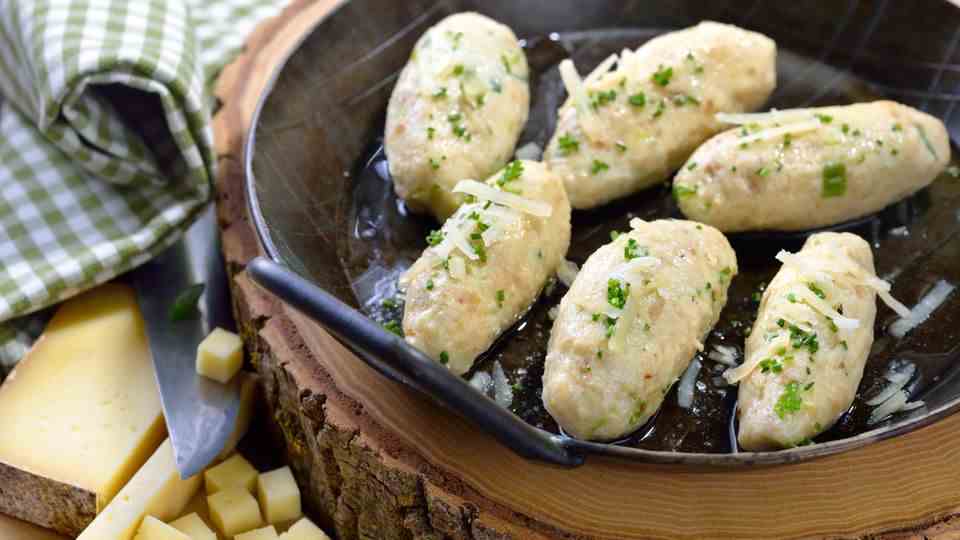
They are a sin, but so delicious and prepared in no time at all: cheese dumplings
For 4 people you need:
- 30 grams of onion
- 20 grams of butter
- 100 g cheese (Gouda, Tilsiter or mountain cheese)
- 150 g sliceable white bread
- 2 eggs
- 100ml milk
- 1 tablespoon flour
- 2 tbsp chives, finely chopped
- Pepper from the mill, salt
- 20g parmesan and butter
preparation
At the beginning we dice, namely: the onions finely, the cheese as small as the white bread. Then sauté the onions in the butter and add to the bread together with the cheese cubes. Season with salt and pepper and mix thoroughly. Then add the flour and knead the mixture until the dough holds together. Form dumplings with wet hands and place in plenty of boiling water. Let cook for about 15 minutes. Remove with a ladle, drain and sprinkle with Parmesan. If you like it hearty, you can pour browned butter over it and sprinkle the dumplings with fresh chives. A dream with bacon and coleslaw or green salads. Tip: Add some quark to the dough to make it taste even richer.
Curd pancakes with plum sauce ©Getty Images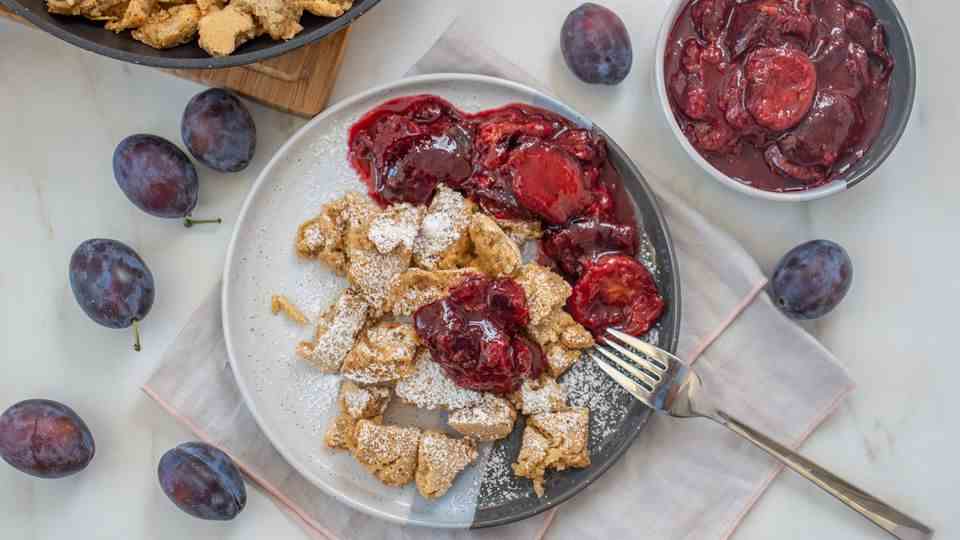
Practical everyday knowledge for all northerners: curd cheese is quark. And already “Topfenschmarren” should sound even tastier for North Germans. Like Kaiserschmarrn, curd pancakes are a “main dessert”. Sweet like a dessert and rich like a main course. That’s how it’s done:
Ingredients for 4 persons:
- 2 eggs
- 300 g curd cheese
- 125 ml cream
- 50 grams of sugar
- 60 grams of sultanas
- grated zest of ½ a lemon
- 80 grams of flour
- 40 grams of butter
- icing sugar for sprinkling
For the sauce
- 225 g plum jam
- 1 tsp rum
- half a teaspoon of cinnamon
- 200 g of plums
preparation
Separate egg yolk and white. Beat the egg whites with the mixer until stiff. Mix the egg yolk, quark, cream, sugar, sultanas, lemon zest and flour, fold in the beaten egg whites. Heat the butter in a pan. Add about a quarter of the batter, bake until golden and turn. A kind of thick pancake is formed, which is torn into pieces and kept warm. The mass should be enough for a total of four of these torn pancakes. For the plum sauce, mix the plum puree with the rum and cinnamon. Stone the plums, cut into small cubes and stir into the purée. Sprinkle the curd cheese with icing sugar and serve with the plum sauce.
Cauliflower with cheese sauce ©Getty Images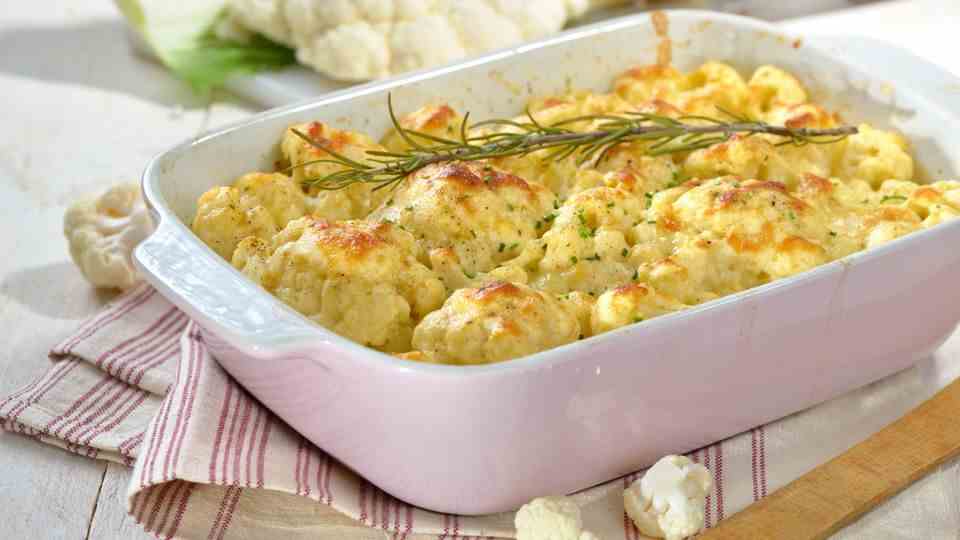
A quick casserole can be easily conjured up from cauliflower and cheese.
Ingredients for 4 persons:
- 1 cauliflower
- 1/4 l milk
- nutmeg
- 2 tbsp cornstarch
- 1 egg yolk
- 100 g Emmental / Parmesan – grated
- Salt
preparation
Boil the cauliflower in salted water until al dente. The cooking point is quickly exceeded, so always keep checking! Grease a heatproof casserole dish and add the cauliflower florets. Then boil the milk with the salt and nutmeg. Mix the cornstarch with cold water and add to the milk, then stir in 1 egg yolk and the cheese. Taste now! Pour the sauce over the cauliflower and bake in the preheated oven at approx. 220° for 10 minutes.
South Tyrolean summer cake ©Getty Images
ingredients for
80 grams of butter
150g butter biscuits
250 grams of ricotta
250 g natural yoghurt
3-4 tbsp powdered sugar
3 tbsp warm milk
2 sheets of gelatin
250 g forest fruits
preparation
For the dough: Soak the gelatine in cold water. Melt the butter in a pan, then add the crushed biscuits and mix well. Put the biscuit-butter mixture in a buttered springform pan and bake in a preheated oven at 170 degrees for 15 minutes.
For the cream: Using a tablespoon, pass the ricotta through a fine sieve into a bowl. Add natural yoghurt and powdered sugar. Stir well. Heat the milk and dissolve the soaked and squeezed gelatine sheets in it. Now stir the milk into the cream. Fold the wild berries into the cream and spread them over the cooled cake base. Let the cake chill in the fridge for 3 hours. Portion and serve.
South Tyrolean wine soup
It is a classic in South Tyrol, the wine soup. This light soup has a firm place, especially in the numerous restaurants in the wine-growing regions. But the best thing is that it is very easy to prepare.
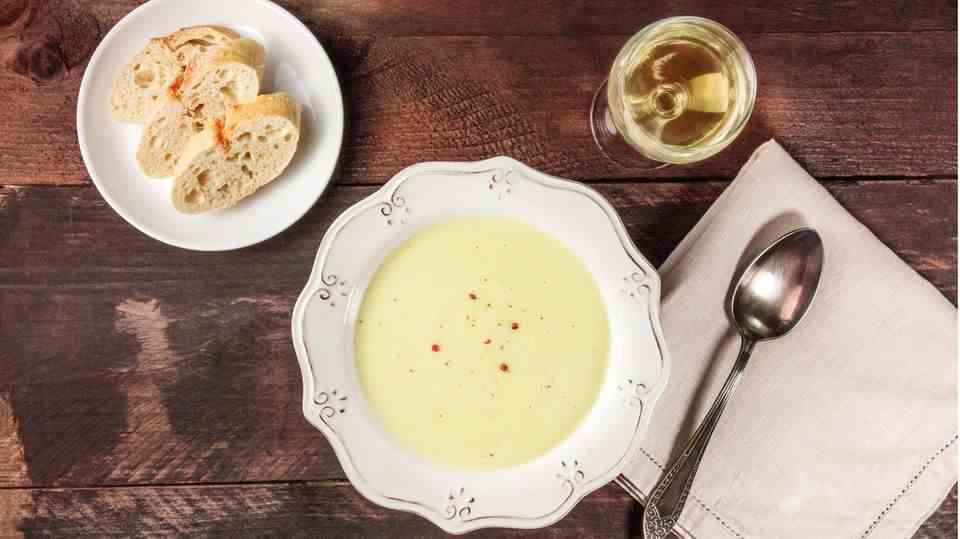
©Getty Images
Ingredients for four servings
250 ml strong meat broth
125 ml white wine
3 egg yolks
100 ml cream
nutmeg
Cinammon
Salt and white pepper for seasoning
For the croutons:
2 slices of toast bread
butter for frying
some cinnamon and nutmeg
preparation
First things first: the soup must never boil! Never! If you heed this, everything will be fine. The first step is very simple: Pour meat stock and white wine into a saucepan. Mix the cream with the egg yolk and add. Now slowly increase the heat and always keep it below 100 degrees, the soup boils, the egg yolk coagulates and the soup is gone. Beat until foamy under heat with a whisk, then season with nutmeg, cinnamon, salt and pepper.
Even if it’s a waste: remove the crust from the toast and cut into small cubes. In a pan, toast the toast cubes in the butter. Season with a pinch of nutmeg and cinnamon. Arrange the wine soup in soup plates, sprinkle with the cinnamon croutons, garnish with fresh herbs if desired and serve hot.
South Tyrolean white wines ©Getty Images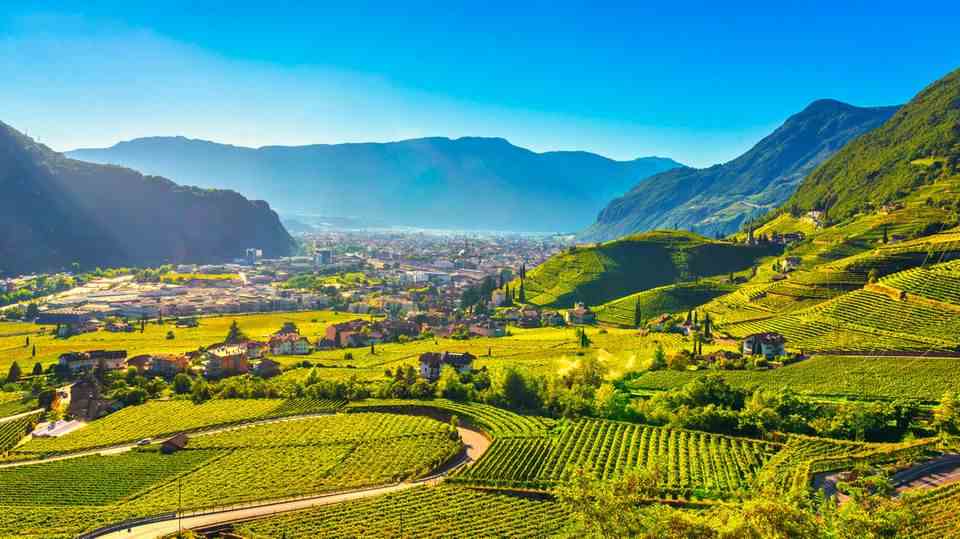
Speaking of wines: The comparatively small South Tyrol has an almost unique density of first-class wineries that have produced many award-winning wines. More than 20 varieties offer a remarkable spectrum, especially the autochthonous grape varieties Lagrein and Vernatsch. The best-known wineries include Elena Walch in Tramin, Alois Lageder with the Vineria Paradeis in Margreid or the St. Michael-Eppan winery. Cellar master Hans Terzer has been the pioneer of South Tyrolean white wine culture for 40 years and one of the ten best cellar masters in the world. His Sauvignon St. Valentin has been awarded the coveted “3 glasses” of the Gambero Rosso for 18 years without interruption.
A good 98 percent of the cultivated area is of DOC quality. This is unique in Italy. Wines with this predicate come from a clearly defined growing area. This can be a vineyard but also an entire growing region. In addition, “Denominazione di Origine Controllata” wines must meet strict requirements with regard to grape varieties, cultivation, harvest and yield. Since the EU wine market reform, DOC has been replaced by DOP – Denominazione di Origine Protetta”. South Tyrol has developed into a white wine region over the past 20 years. The varieties Pinot grigio (also known as Ruländer), Chardonnay and Pinot Blanc are particularly popular. The Gewürztraminer is the undisputed leader among South Tyrolean white wines. The name is deeply rooted in the region, as it most likely derives from the picturesque village of Tramin on the Wine Route in the South Tyrolean lowlands.
South Tyrolean red wines ©Getty Images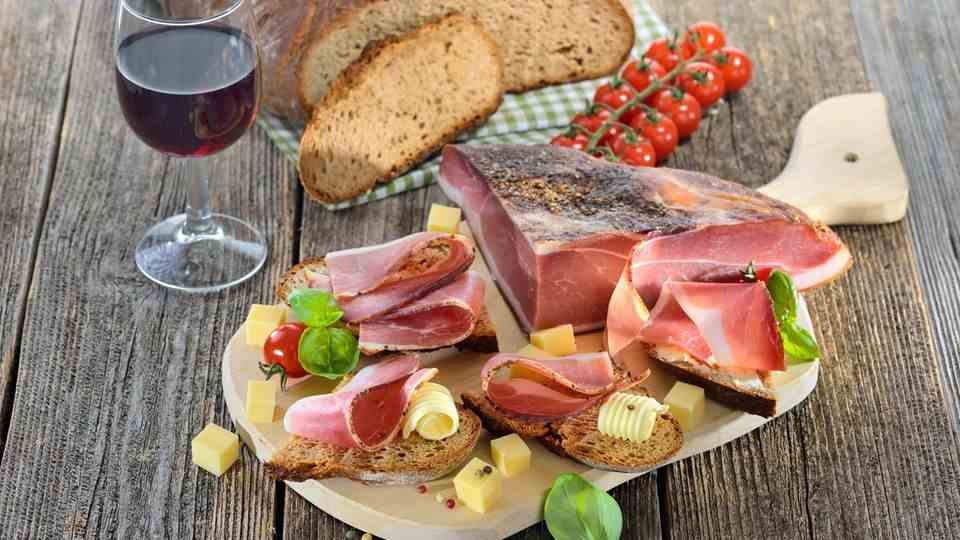
Although red wine goes well with down-to-earth South Tyrolean cuisine, it plays a secondary role in comparison to white wine. At the forefront is the versatile Vernatsch. The Farnatzer or Vernetzer, the original name of this oldest autochthonous grape variety in South Tyrol, is known to many from the single vineyard wines Kalterersee, Meraner or St. Magdalener. Lagrein, which went out of fashion 50 years ago, was rediscovered. Today, the aromatic, soft red meets the contemporary taste as a prestige wine.
If you want to explore the South Tyrolean wine country more intensively, you should definitely do so on the “Strada del Vino”, the South Tyrolean wine route. In addition to guided tours or a wine safari in the shuttle bus, there are wine paths and routes as well as a wine museum in Caldaro am See for tourists to discover. Almost 70 wineries and gastronomic establishments – from rustic to stylish – as well as different hosts invite you to visit in the midst of over 4,000 hectares of vineyards.

